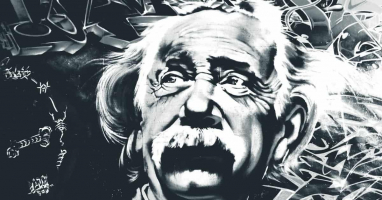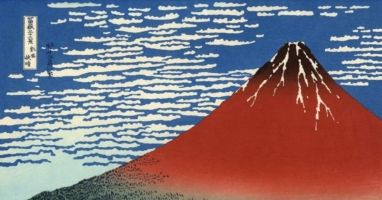I wrote this article in Japanese and translated it into English using ChatGPT. I also used ChatGPT to create the English article title. I did my best to correct any translation mistakes, but please let me know if you find any errors. By the way, I did not use ChatGPT when writing the Japanese article. The entire article was written from scratch by me, Saikawa Goto.
Introduction
Movies and books covered in this article
Three takeaways from this article
- To truly understand Buddhism, “training” is essential, and it cannot be fully grasped with just reasoning.
- People in the Indian aim for “Buddhist deliverance” precisely because they believe in “reincarnation.”
- “Training” is necessary to see “tits” as “just a lump of fat.”
Self-introduction article


Published Kindle books(Free on Kindle Unlimited)
“The genius Einstein: An easy-to-understand book about interesting science advances that is not too simple based on his life and discoveries: Theory of Relativity, Cosmology and Quantum Theory”
“Why is “lack of imagination” called “communication skills”?: Japanese-specific”negative” communication”
The quotes in the article were translated using ChatGPT from Japanese books, and are not direct quotes from the foreign language original books, even if they exist.
This Book Explains the Beliefs of Gautama Buddha and Why Buddhism has been Passed Down for so Long
To be honest, I don’t have a very good impression of “religion” in general. This applies not only to new religions, but also to Christianity, Islam, and so on. The reason for my negative impression is that I have an image of “blindly believing in the teachings of important people.” I have an impression that people accept “what Christ said” or “what is written in the Quran” in a somewhat uncritical way, believing that it is an absolute “correctness.” Of course, I had the same feeling toward Buddhism (whether for the same reasons as mine or not, I think Japanese people often have an aversion to the word “religion” and its existence for some reason or another. This description may be offensive to those who believe in some religion, but I am translating a text for Japanese into English, so please forgive me).


However, after reading this book, my impression of Buddhism has changed significantly, at least.
Of course, Buddhism also has the “teachings” of its founder, Gautama Buddha, but there is no “blind faith” in it. In Eastern philosophy, including Buddhism, the most important thing is to “get enlightenment,” and all teachings are merely means to achieve this. I felt that it is more like a guidebook that pushes people in the world towards the state of “enlightenment,” rather than a “rulebook” like the Bible or the Quran.
Buddhism itself is not an easy thing to understand, but the descriptions in this book are very easy to understand, and it makes even beginners like me feel like understand it. I encourage you to pick up the book without hesitation (Unfortunately, no English translation seems to exist at this time).

“Points to Keep in Mind for Understanding Buddhism” and “Points to Keep in Mind for Reading This Book”
The beginning of this book says something like this:
What I’m doing in this lecture is trying to explain the reasoning and logic as much as possible, but ultimately, we won’t understand the true nature of Buddhism until we actually practice it.
Training is essential for understanding Buddhism. Those who don’t train cannot understand Buddhism. Therefore, the author’s stance is that this book exists to help people understand that “those who don’t train cannot understand Buddhism.”


As previously mentioned, in Buddhism, the most important thing is to “get enlightenment,” and all teachings are merely guidebooks to achieving it. To achieve enlightenment, we must undergo training. Therefore, even if you read guidebooks alone, you cannot truly understand the essence of Buddhism.

So, even if you read this book, you won’t understand Buddhism. However, this book will take us the point just before where we realize that “I can’t understand it more without ‘training’,” so it’s worth reading for that alone.
Furthermore, the book emphasizes another point:
Therefore, in this book, I mainly talk about the fundamental philosophical structure of Gautama Buddha’s Buddhism and its relationship with the practice of meditation.
Roughly speaking, this means that “although there are many different types of Buddhism, this book will focus on only the claims of its founder, Gautama Buddha”.

There are two main branches of Buddhism: “Hinayana Buddhism” and “Mahayana Buddhism”. Gautama Buddha’s arguments can be summed up in “Hinayana Buddhism,” but what we generally imagine when we hear the word “Buddhism” is “Mahayana Buddhism. Therefore, it is important to note that this book is not about the Buddhism that is familiar to us.


In this book, it is written like this.
Because it is a work of that nature, it is certainly not an introductory book of the kind that says, “You can understand everything about Buddhism just by reading this one book.” As I mentioned earlier, there are various views on Buddhism, so this lecture is just one of them. Moreover, there are many things that cannot be touched upon even if they are basic knowledge. However, as the title suggests, I secretly have confidence that by reading this book, readers will feel that “Oh, I see. Buddhism is definitely an interesting thing”.
In other words, the author wrote this book with the intention of providing a gateway to the world of Buddhism.

So what is the relationship between “Hinayana Buddhism” and “Mahayana Buddhism”? The author explains this while quoting the idea of another person. In a nutshell, “Mahayana Buddhism” was created based on “Hinayana Buddhism” doujinshi (fanzine) (A doujinshi is a booklet about a personal hobby, published by an individual).
After the death of Gautama Buddha, his disciples began to think in various ways, “Buddha said this, but I want Buddhism to be like this.” These are separate creations (doujinshi) that include elements of “Hinayana Buddhism,” which is Gautama Buddha’s philosophy, but also contain the hopes of his disciples.

And those doujinshi have become more widespread, so the image of “Buddhism” we know is based on “Mahayana Buddhism”. However, that’s why that is different from what Gautama Buddha originally advocated.
I hope you will read this book and the following article after understanding these two points.
The Essence of Gautama Buddha’s Assertion is to “Become a NEET Person Who Doesn’t Even Make Eye Contact with the Opposite Sex!”
The author asserts the following about Buddhism:
Therefore, Gautama Buddha’s Buddhism is originally not a “teaching for being useful to humanity in society”.
First of all, this point surprised me a lot.

I believe that “Buddhism-like things” seems to be perceived as “calm” and “valuable”, just as “mindfulness” has recently been renamed “meditation” and is attracting more attention. Many people may also have an image of monks as “good” and “peaceful” people, regardless of their actual personality.

Of course, I think it’s possible to become a “good” and “peaceful” person by undergoing training in Buddhism. However, it’s important to note that Gautama Buddha did not found Buddhism with such a goal in mind.

So what was Gautama Buddha’s goal? The book describes the “ideal Buddhist practitioner that should be reached at the end of training” that Gautama Buddha envisioned.
To put it in modern and easy terms and use a metaphor, Gautama Buddha taught his disciples, who aimed for Buddhist deliverance and were monks, to ‘Become a NEET person who doesn’t even make eye contact with the opposite sex!'” (*NEET: Not currently being Employed, Educated or Trained).

This might not make sense at first, but you’ll understand it if you read to the end. However, even so, the phrase “Become a NEET person who doesn’t even make eye contact with the opposite sex!” has quite an impact, and it’s very interesting that it doesn’t match the image of “Buddhism” at all.
However, if it’s true, a question arises: Why has such a teaching as “Become a NEET person who doesn’t even make eye contact with the opposite sex!” been passed down for over 2500 years? This assertion, “Become a NEET person who doesn’t even make eye contact with the opposite sex!”, is not understandable even when compared with the values of any era in the past, as well as today. It can be said that it is an “unorthodox claim” in any era. So why has such an unorthodox claim continued to exist?

The author argues that it is worthwhile to consider the reason why in order to truly understand Buddhism
If that’s the case, I think what we really need to do to truly understand Buddhism is not to hide the fact, known from literature, that Gautama Buddha recommended becoming a NEET person who doesn’t even make eye contact with the opposite sex. Instead, we should consider head-on what value can be obtained after practicing such “inhumane” and “dangerous” teachings literally.

I think that’s exactly right. No matter how wonderful the teaching may be, if it doesn’t bring any value, it shouldn’t have lasted until today. So, paradoxically, there must be some value to the claim that you should “become a NEET person who doesn’t even make eye contact with the opposite sex!” after all.

What we can understand from this is that there is some value to be found in what Gautama Buddha called his “inhumane and simple teachings,” and that people who think this way have existed for a long time.
So, what exactly is this “value”? Quoting directly from this book’s description:
The ethos of being fulfilled just by being. In other words, a way of living in this world where simply existing, simply being here and now and breathing, is enough to be “fully satisfied”.

This passage may not make much understandable at the moment, but anyway let’s understand the point that “Gautama Buddha makes unusual claims, but practical value can be obtained by training for their realization.”
So, let’s take a look at Gautama Buddha’s thinking and how he arrived at the claims of “Hinayana Buddhism.”
The Idea is to Aim for “Buddhist Deliverance” in order to Escape from the “Infinite Loop”
First, let me explain about “Buddhist deliverance.”

Gautama Buddha saw the world as “the conditioned world”. For example, the sun rises and eventually sets, or vegetables left alone will eventually rot. In this way, the world that is built on the idea of “if you do XX, it will become XX” is called “the conditioned world” and is called “有為(UI)” in the world of Buddhism.

On the other hand, “無為(MUI)” is the opposite of “UI” and refers to the world that is not conditioned. It is also called “nirvana” and achieving this “MUI (nirvana)” through the practice of Buddhism is called “Buddhist deliverance.”

“Conditioned” will appear again later as the “tits problem,” so let’s explain it in detail there.
Now, a question arises as to why we must aim for “Buddhist deliverance.” This is related to the very important concept of “Dukkha” in Buddhism.
So, what is “Dukkha”?
We are usually immersed in acts of satisfying our desires in “UI (the conditioned world).” In other words, “I want to eat delicious food” or “I want to go on a trip overseas,” etc. However, no matter how much delicious food we eat, we always want to eat something more delicious. And no matter what the desire is, there is no end to the act of seeking fulfillment.

In this way, “Dukkha” refers to the state of endlessly pursuing desires and never being able to reach a state of satisfaction. Many people might feel like no matter how much they do what they want, they never feel fulfilled, and that’s exactly what “Dukkha” means.
In Indian culture, this is considered to be a very important issue because they believe in reincarnation, which is the idea that one is reborn after death. Although “reincarnation” has various nuances that are difficult for us, not familiar with Buddhism, to grasp, it can be roughly understood as “being born again”.

If we only had one life to live, being trapped in “Dukkha” may not be a big problem. However, if we unable to escape this “Dukkha” although we were to be reborn again and again, it would be too painful. This is an infinite loop of “Dukkha.”


That’s why the idea of aiming for “Buddhist deliverance” was born, in order to break free from such an infinite loop. And that’s why Gautama Buddha thoroughly thought about what to do to achieve it.
To Escape from “Dukkha” and Achieve “Buddhist Deliverance,” You Must Change the Way You Perceive the World
So, what should we do? The basic idea is simple. Since “Dukkha” is causing us to be trapped in “UI”, all we need to do is discard “Dukkha”. By doing so, we can reach “MUI (nirvana)”, where there is no more suffering.

So, how can we abandon “Dukkha”? The root cause of “Dukkha” is “渇愛(KATSUAI)”, in other words, “desire”. Because of “KATSUAI”, one cannot stop engaging in “actions to fulfill desires”. Therefore, it’s necessary to eliminate “KATSUAI (desire).”
In other words, ultimately, it comes down to the question of “how to eliminate ‘KATSUAI (desire)’.” And finally, we come to the “breast problem” that was mentioned earlier.
Now, the following discussion is unavoidably from a male perspective, so for women, please imagine something in place of “tits”.

When viewed without desire, “tits” are nothing more than just a lump of fat. However, it is hard for most men to view “tits” in front of them as just a lump of fat. We can’t help feeling aroused and see it with desire. In other words, we are seeing “tits” as something more than just “a lump of fat”.
This state of perceiving something that is actually just “a lump of fat” with desire is called “KATSUAI (desire).” This is what is known as the “tits problem” discussed in this book.


Gautama Buddha’s argument is, “Let’s break through ‘KATSUAI’ by changing ‘cognition’ through training. In other words, we need to change our cognitive perception so that even when “tits” are in our sight, we can perceive them as “just a lump of fat,” and that requires training.
Do you understand a little bit? Let me explain a bit more.
Perceiving “tits” as “something that makes me horny” is like living in a “conditioned world.” No matter how much we tell ourselves in our heads that “tits are just a lump of fat,” we get trapped in a cognitive perception that involves desire when we actually see “tits.”

That is why Gautama Buddha perceived to be “the world=Dukkha”. Living in a world where cognitive perception with desire is unavoidable, satisfaction of desire continues endlessly, and as a result, one becomes unable to escape from “Dukkha”.
Therefore, it is necessary to transform “cognitive perception with desire” by breaking down the “world” itself. In other words, it means changing the way of perceiving the world so that even when looking at “tits”, it only appears as “just a lump of fat”. That is why “training” is necessary in Buddhism.

Through this explanation, you should be able to understand why “training” is essential in Buddhism. No matter how much you understand Gautama Buddha’s claims in your head, it won’t make “tits” appear as “just a lump of fat”. It is necessary to change the cognitive perception itself through rigorous training, and therefore, it can be said that we cannot understand Buddhism if we only know it in theory.
Conclusion
It may be difficult to fully understand the text of this article alone. Even if we feel like we understand it after reading a book, it can be challenging to explain it to others. Once again, I am amazed by the readability and clarity of this book.

The author is not at all the type to push his interpretation as the correct one, but on the other hand, he does complain about the various “Buddhism books” out there. Some of which do not understand the essential aspects of Gautama Buddha’s claims, and some of which have a strong insist “this should be the way”. Many of these books seems not to even touch on the author’s important belief that “Gautama Buddha’s teachings are not things that is useful in society for a human.”
The author isn’t a Buddhist himself, but he is interested in how Gautama Buddha created Buddhism and has been studying it independently. He seems to have a very neutral viewpoint and I felt this is excellent as a beginner’s book.

Published Kindle books(Free on Kindle Unlimited)
“The genius Einstein: An easy-to-understand book about interesting science advances that is not too simple based on his life and discoveries: Theory of Relativity, Cosmology and Quantum Theory”
“Why is “lack of imagination” called “communication skills”?: Japanese-specific”negative” communication”








コメント